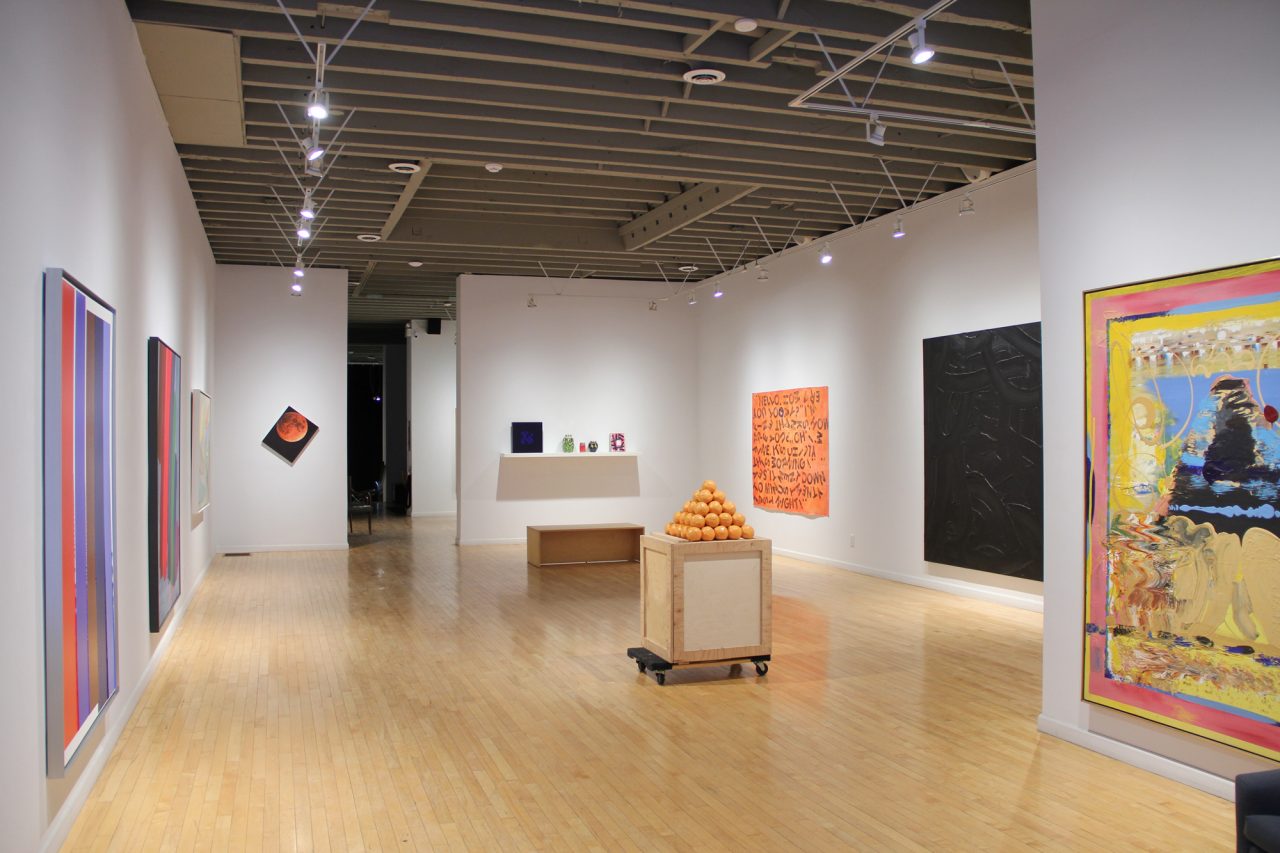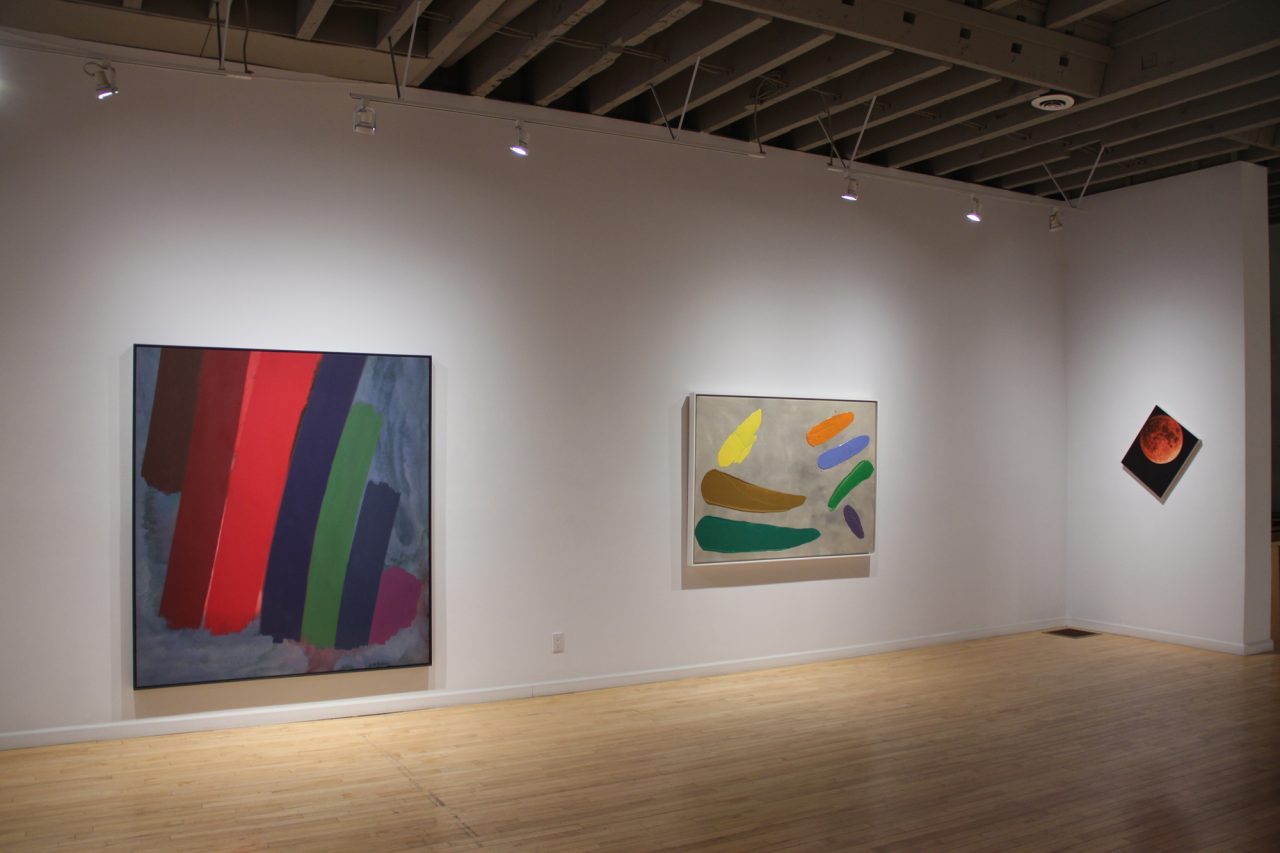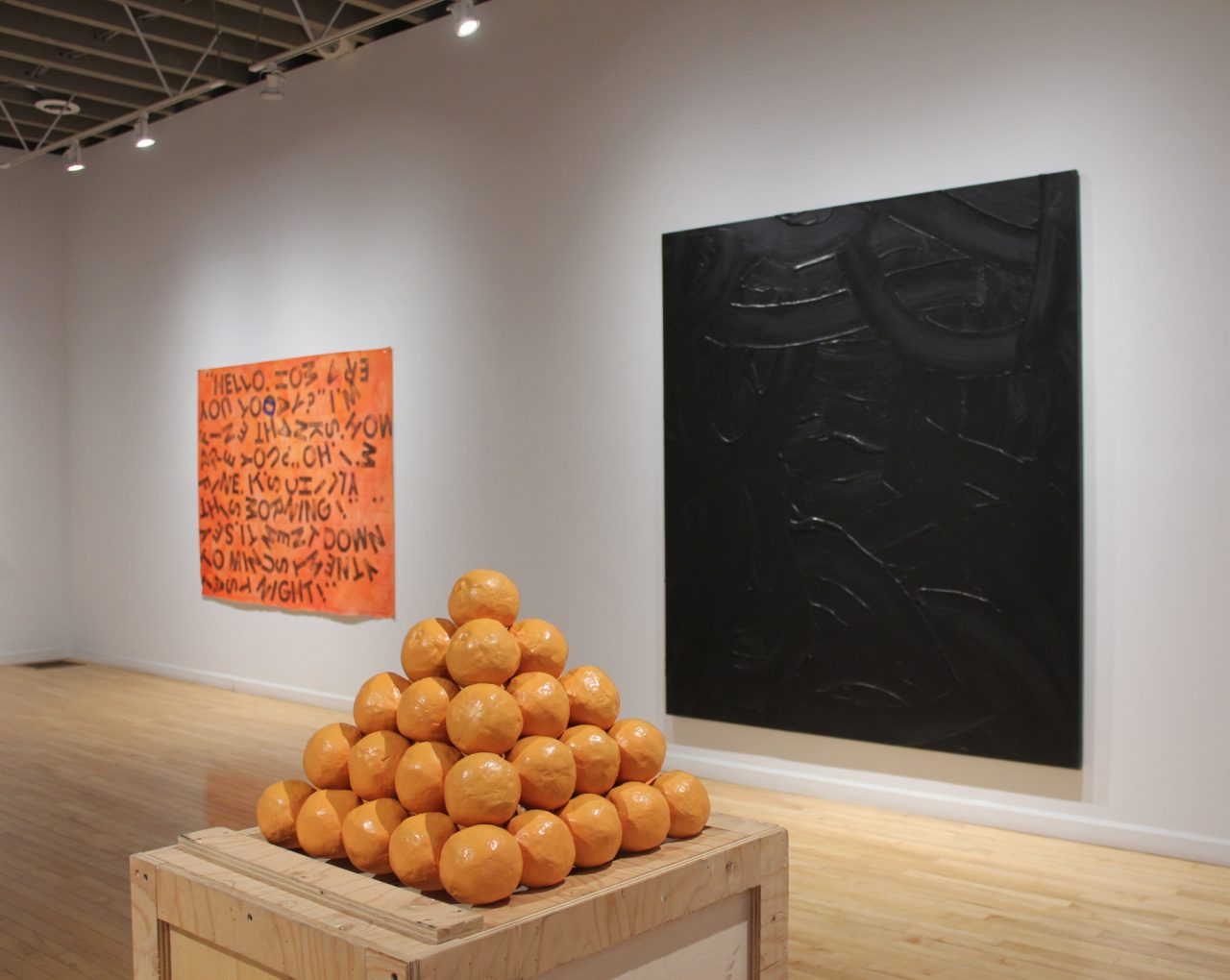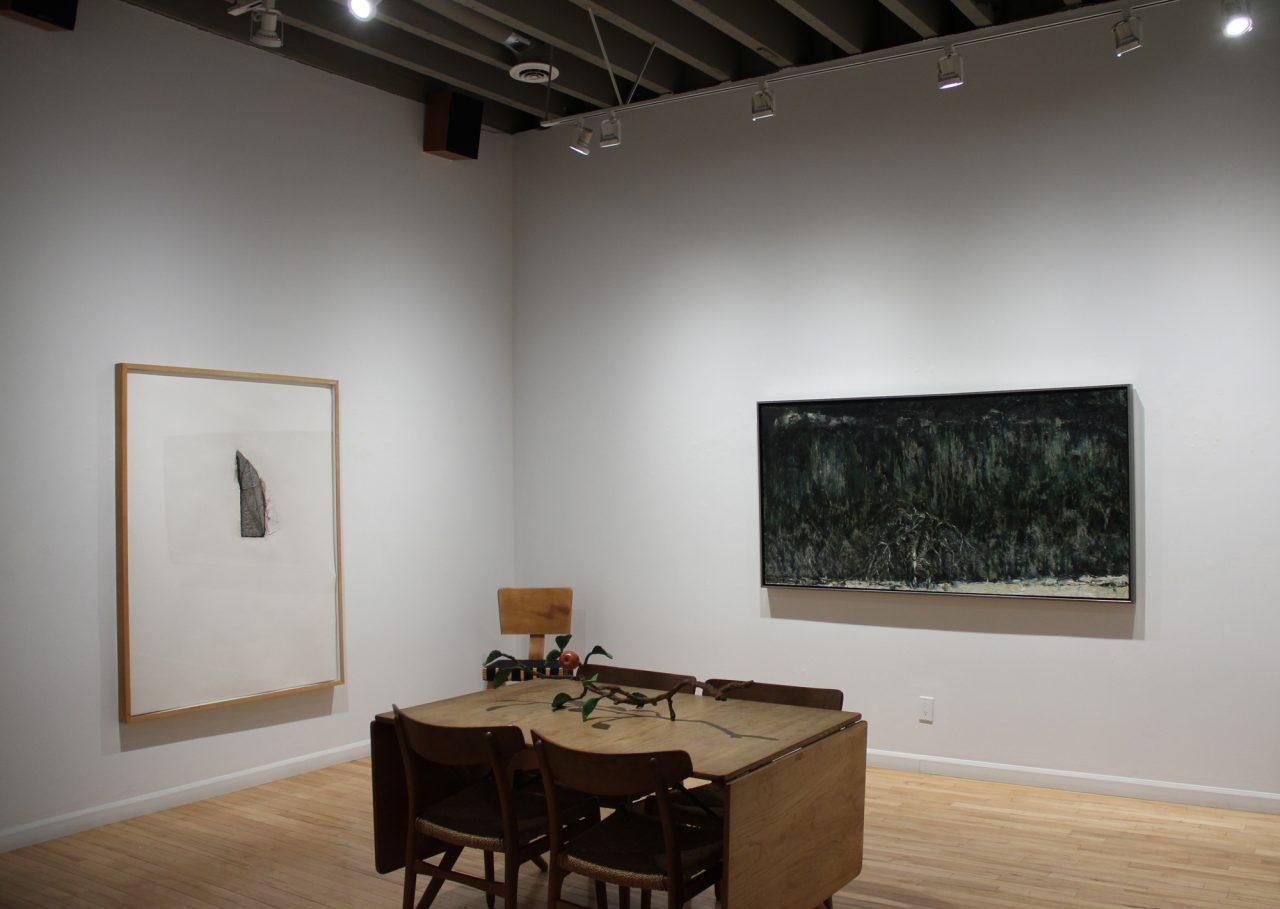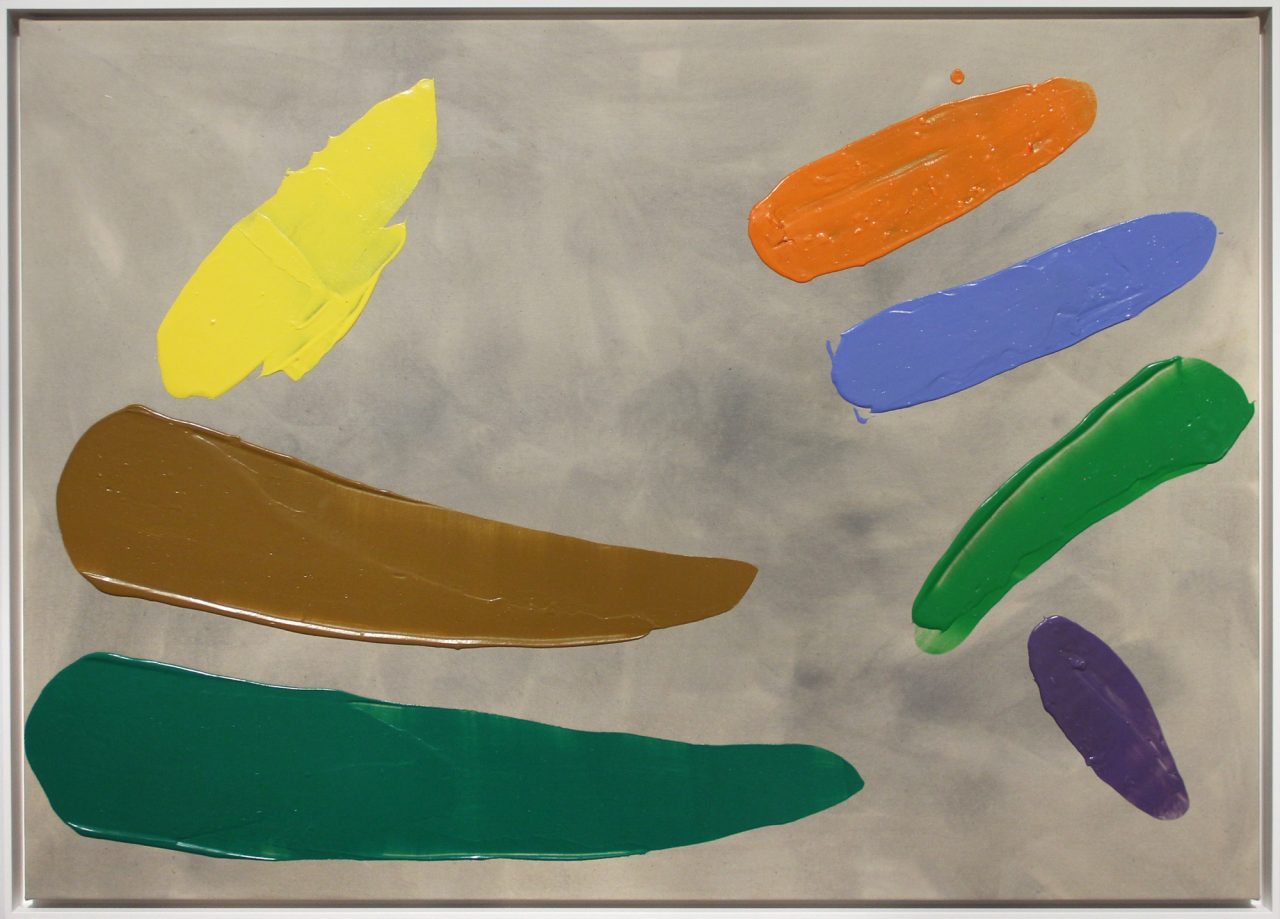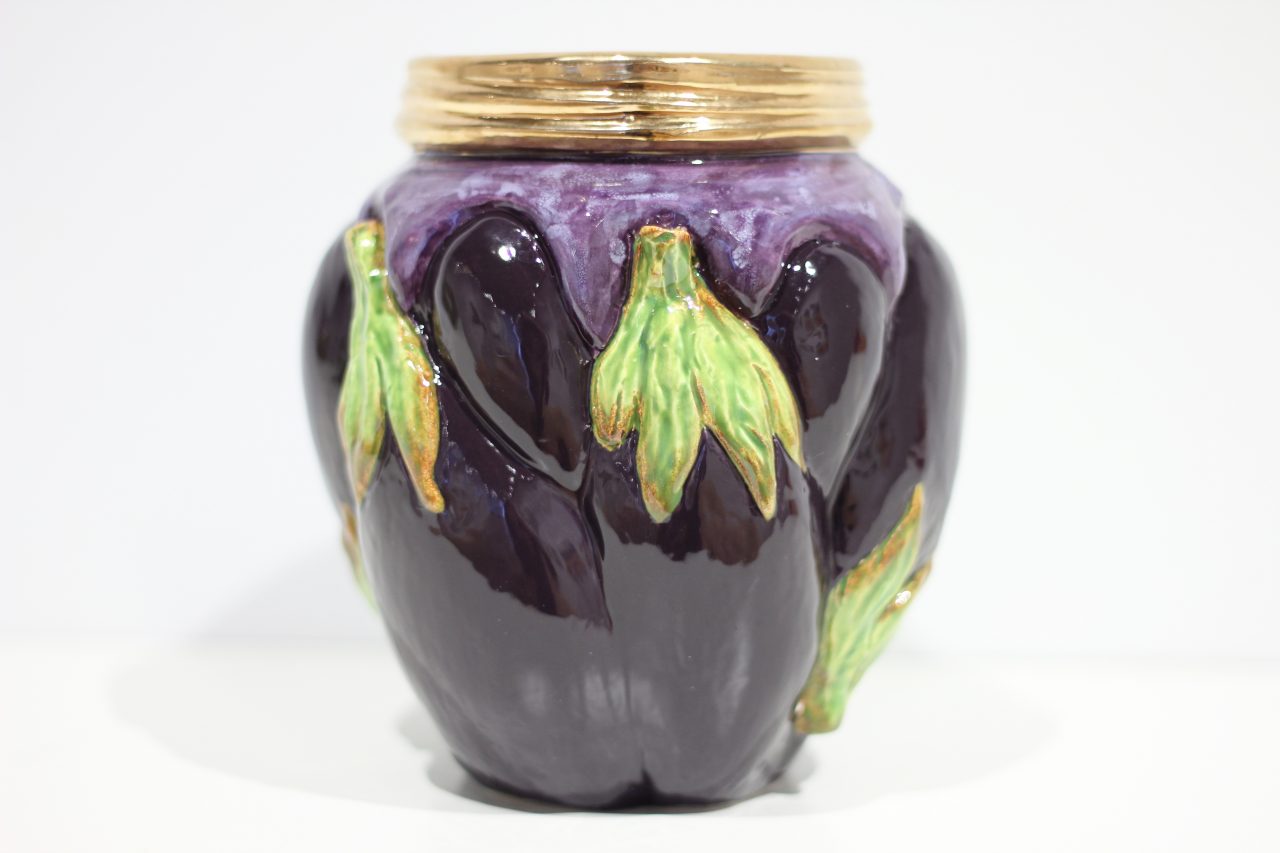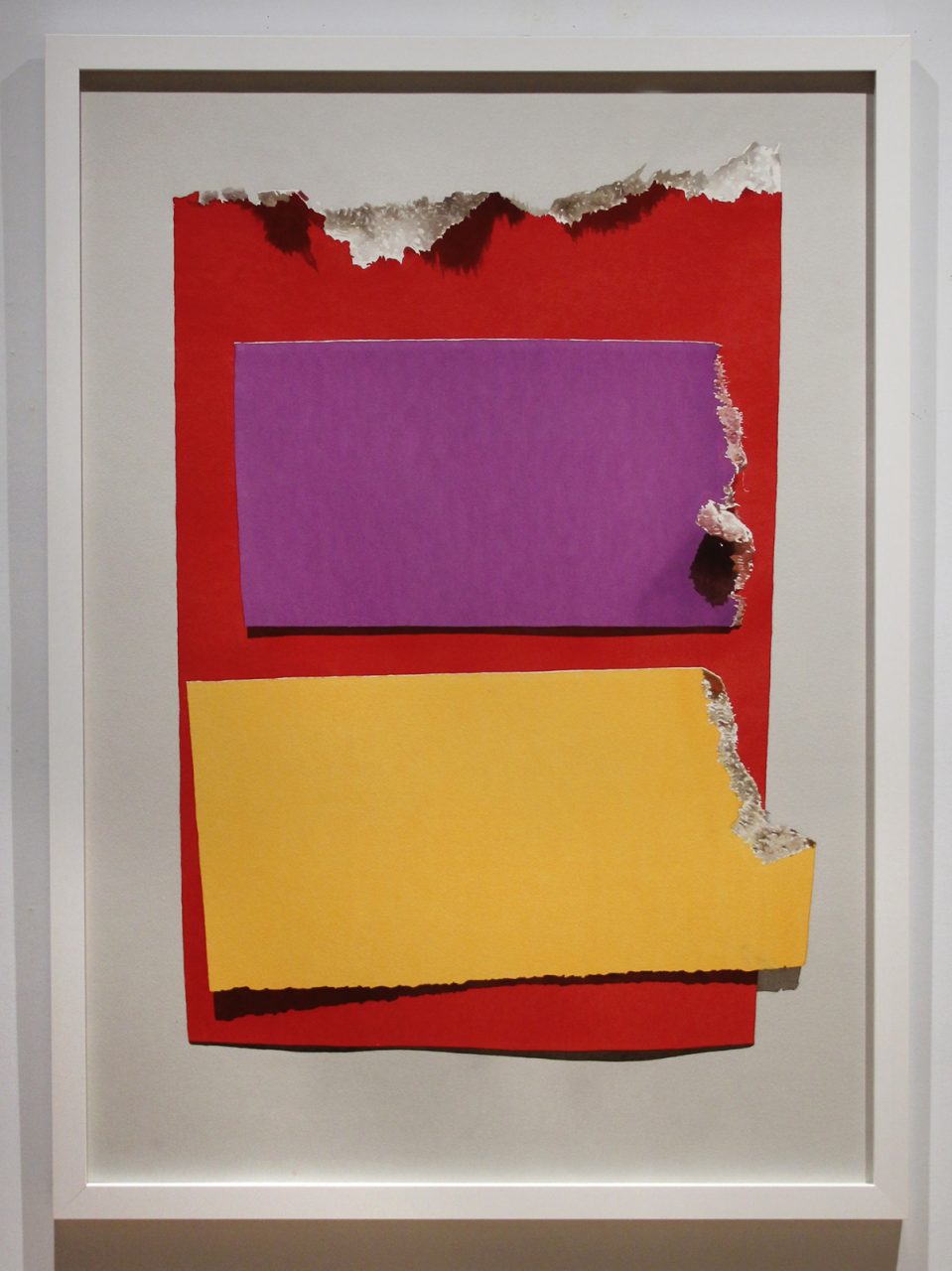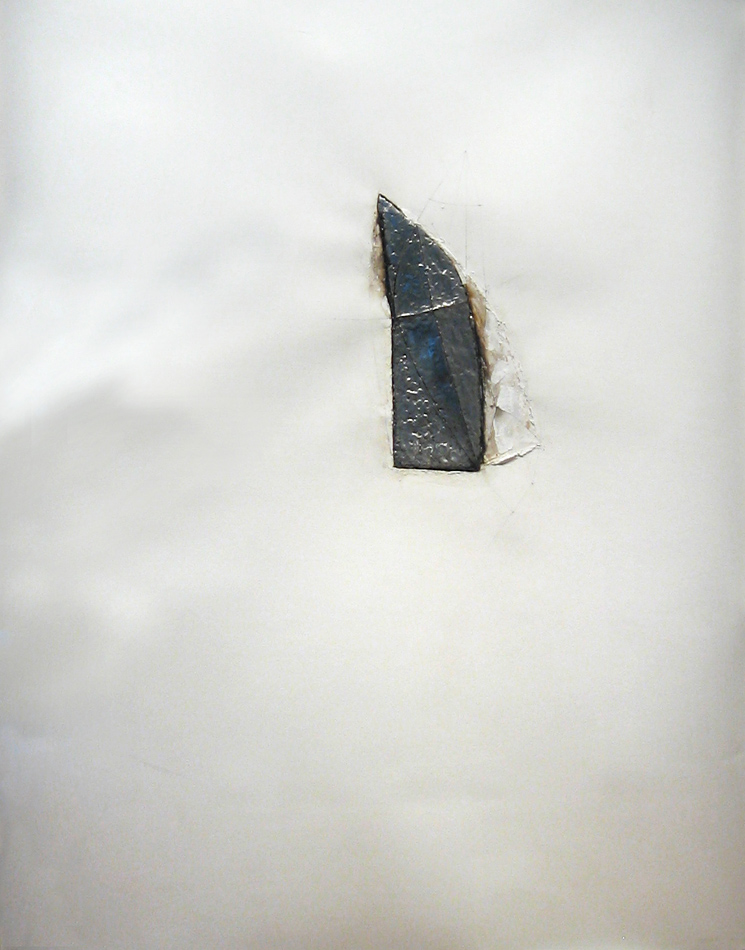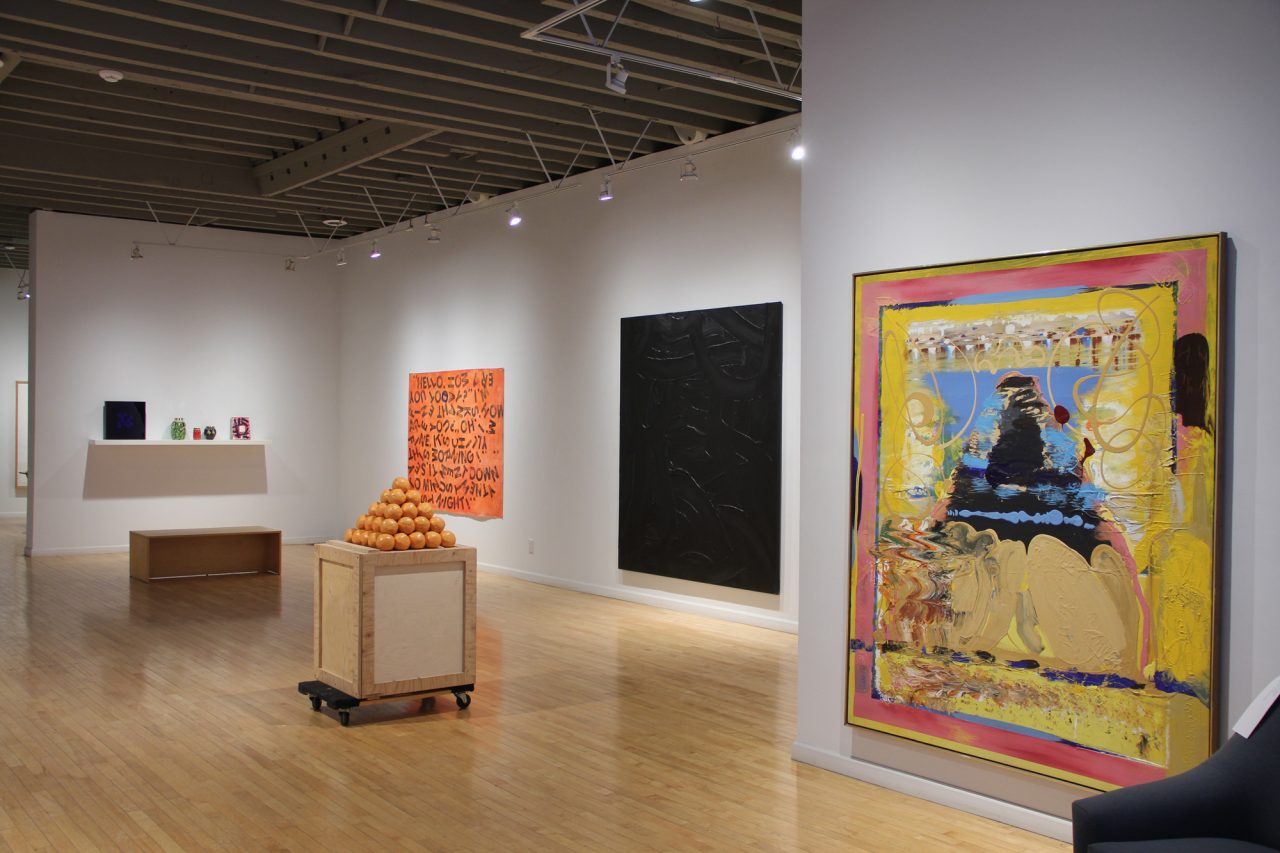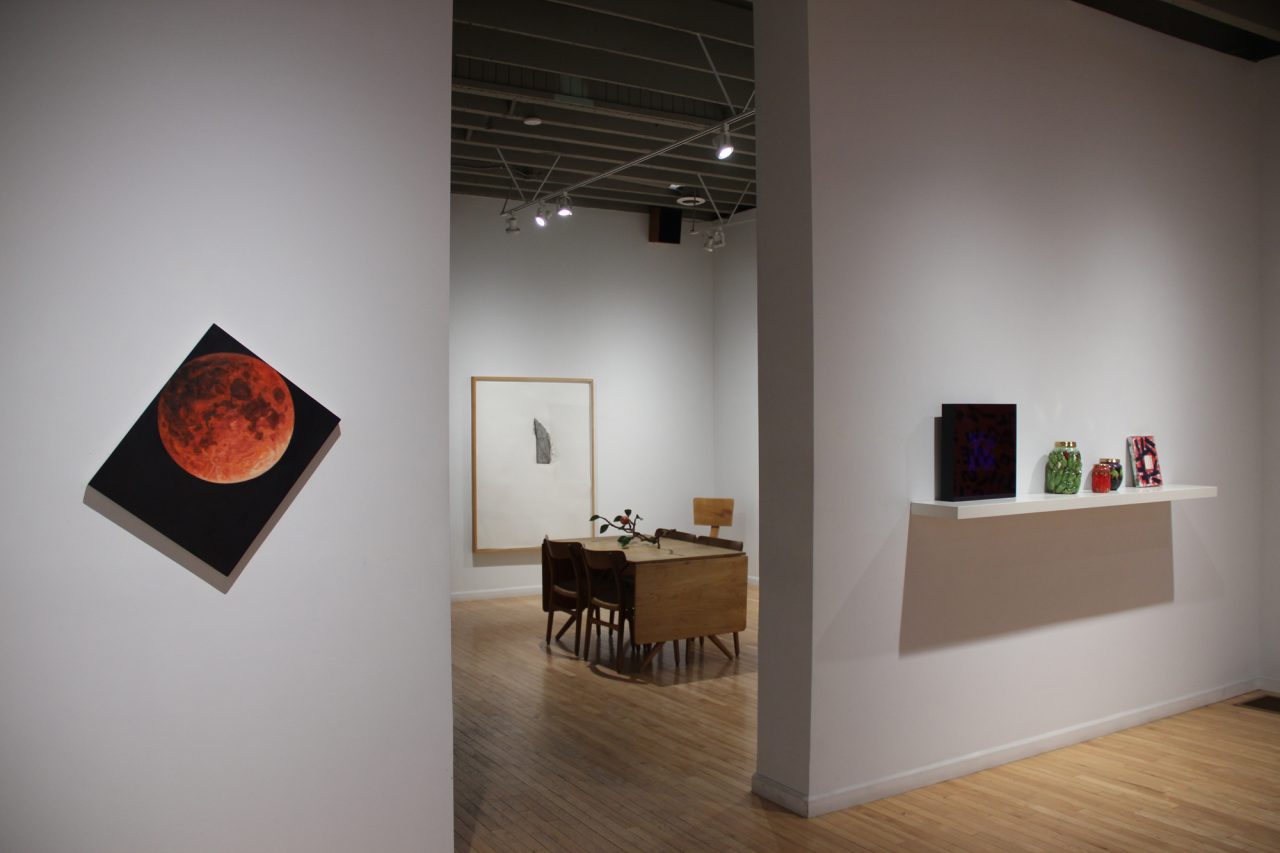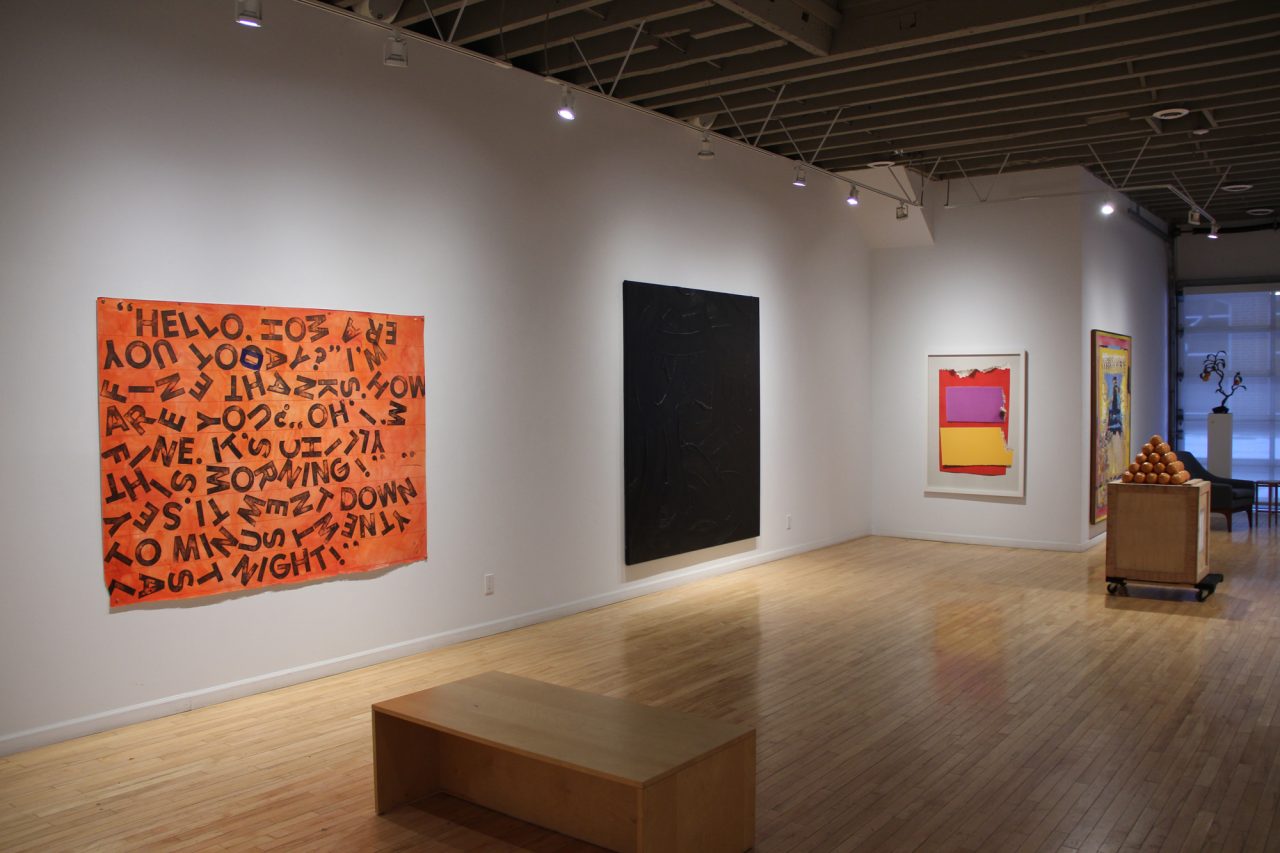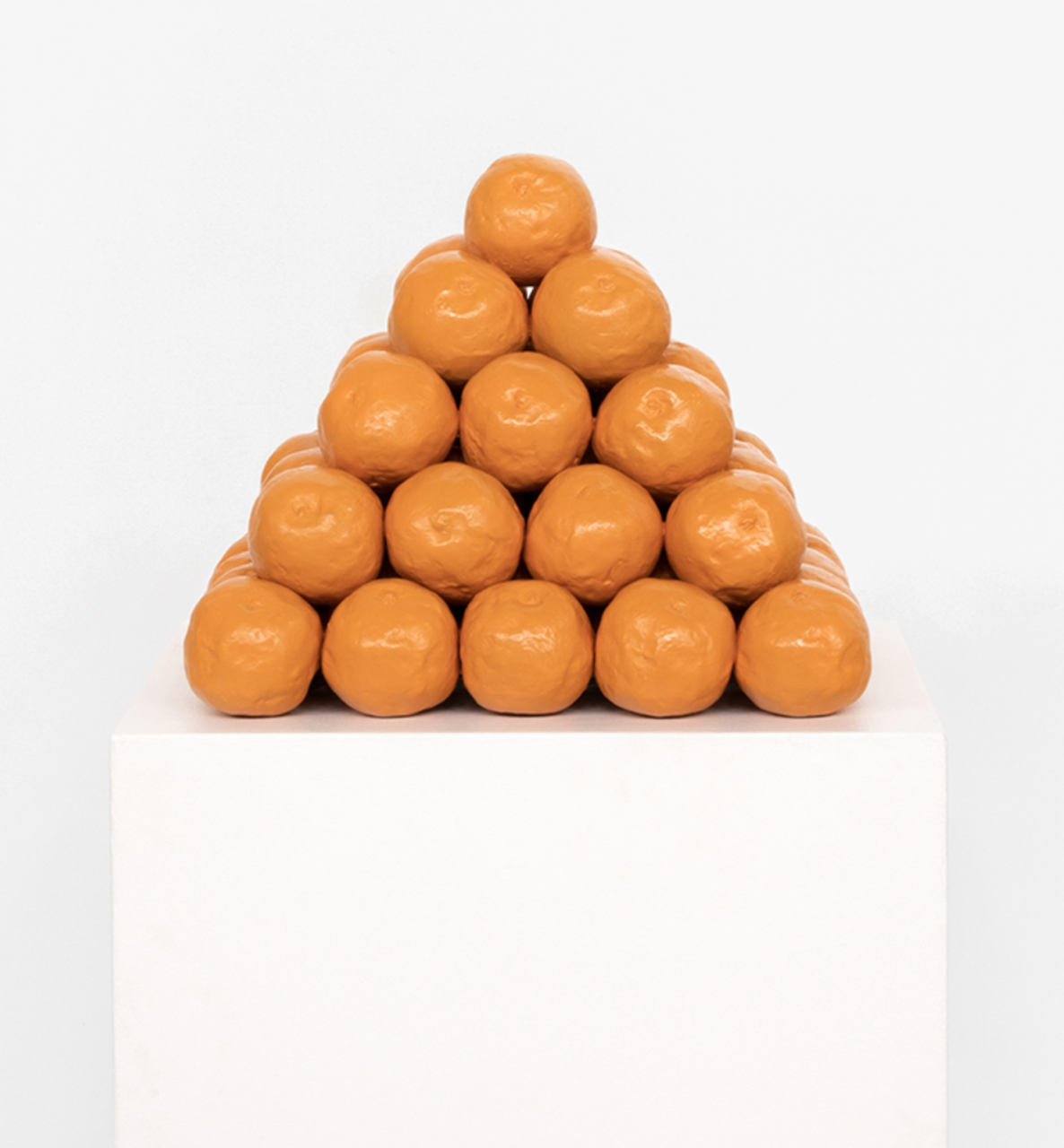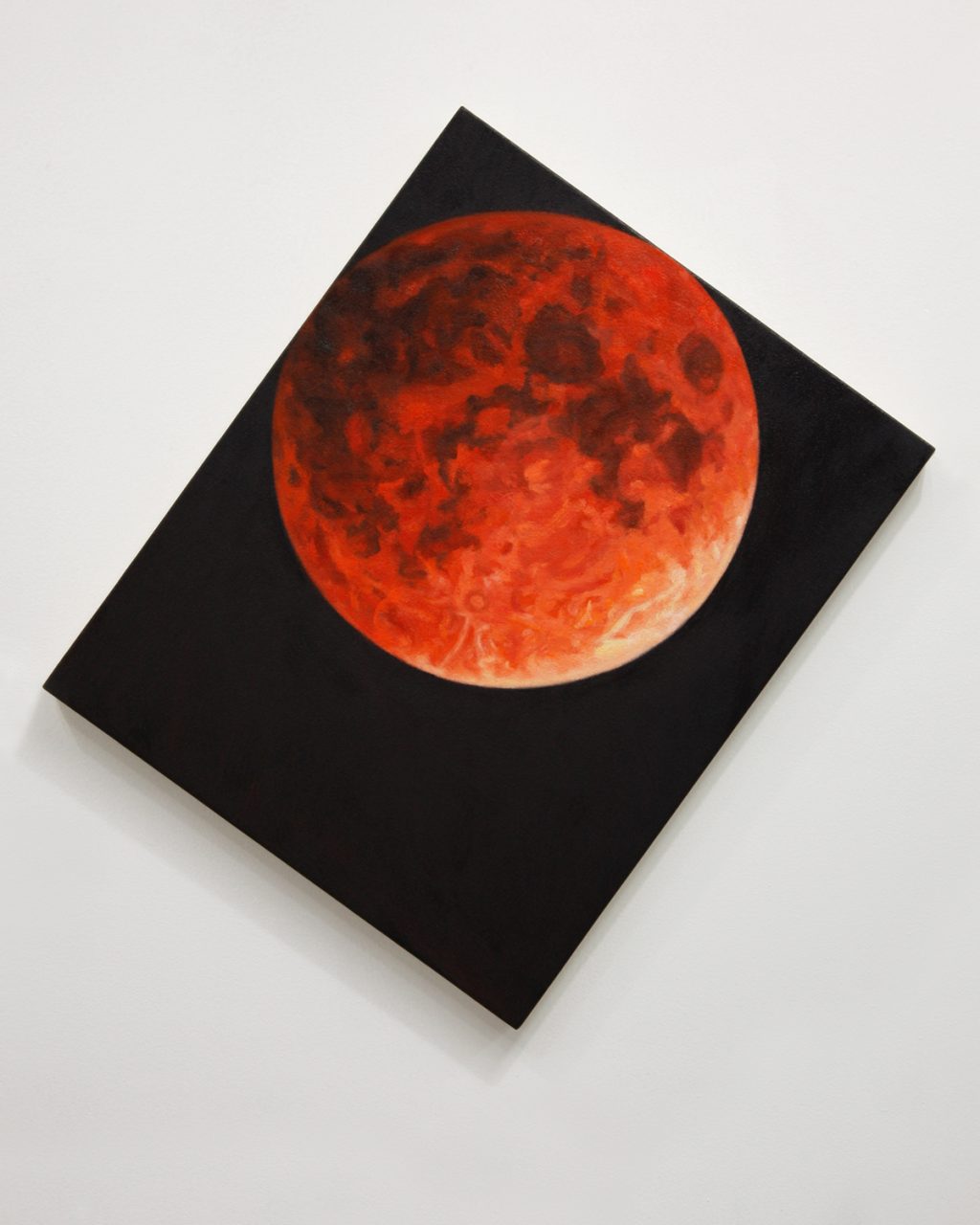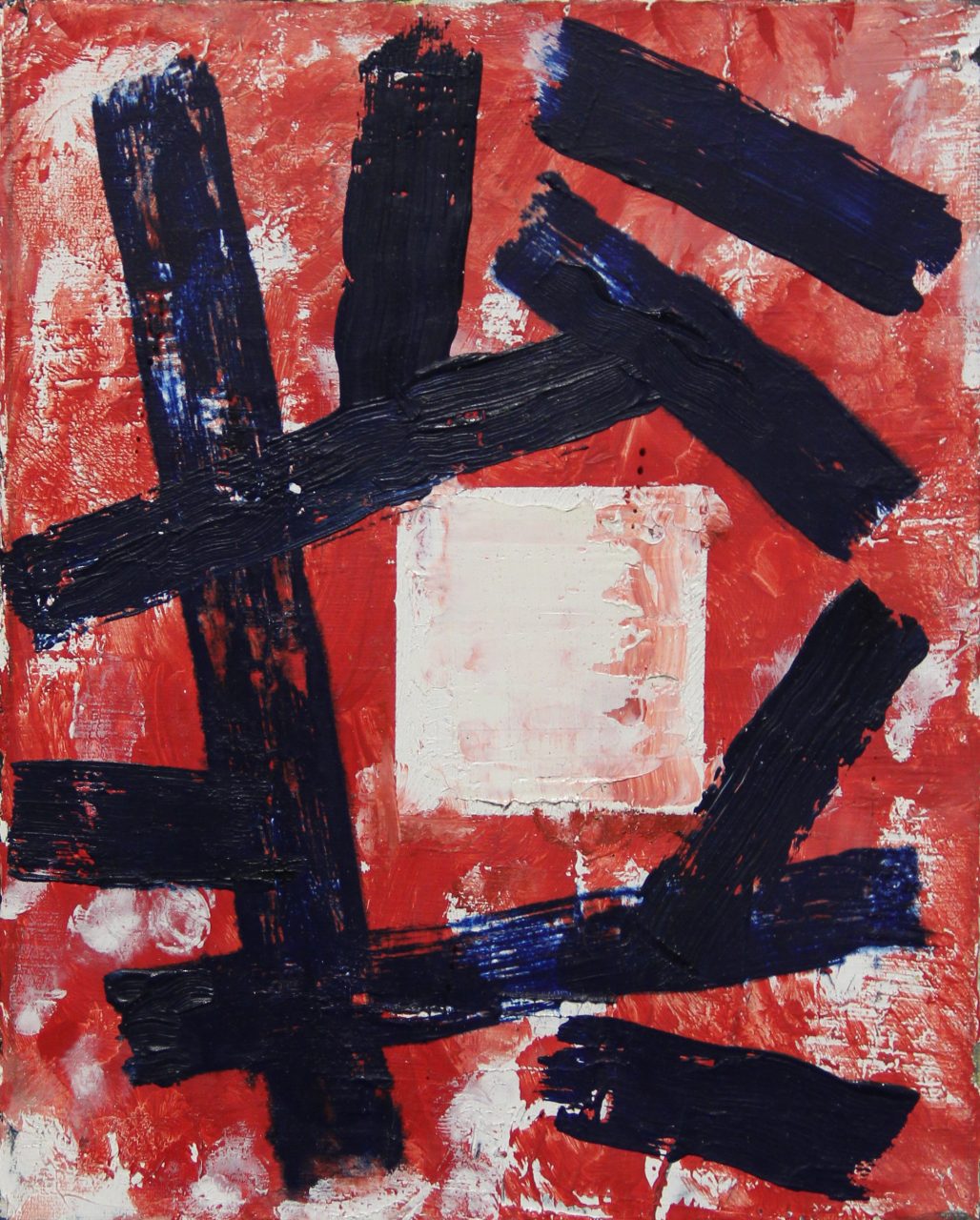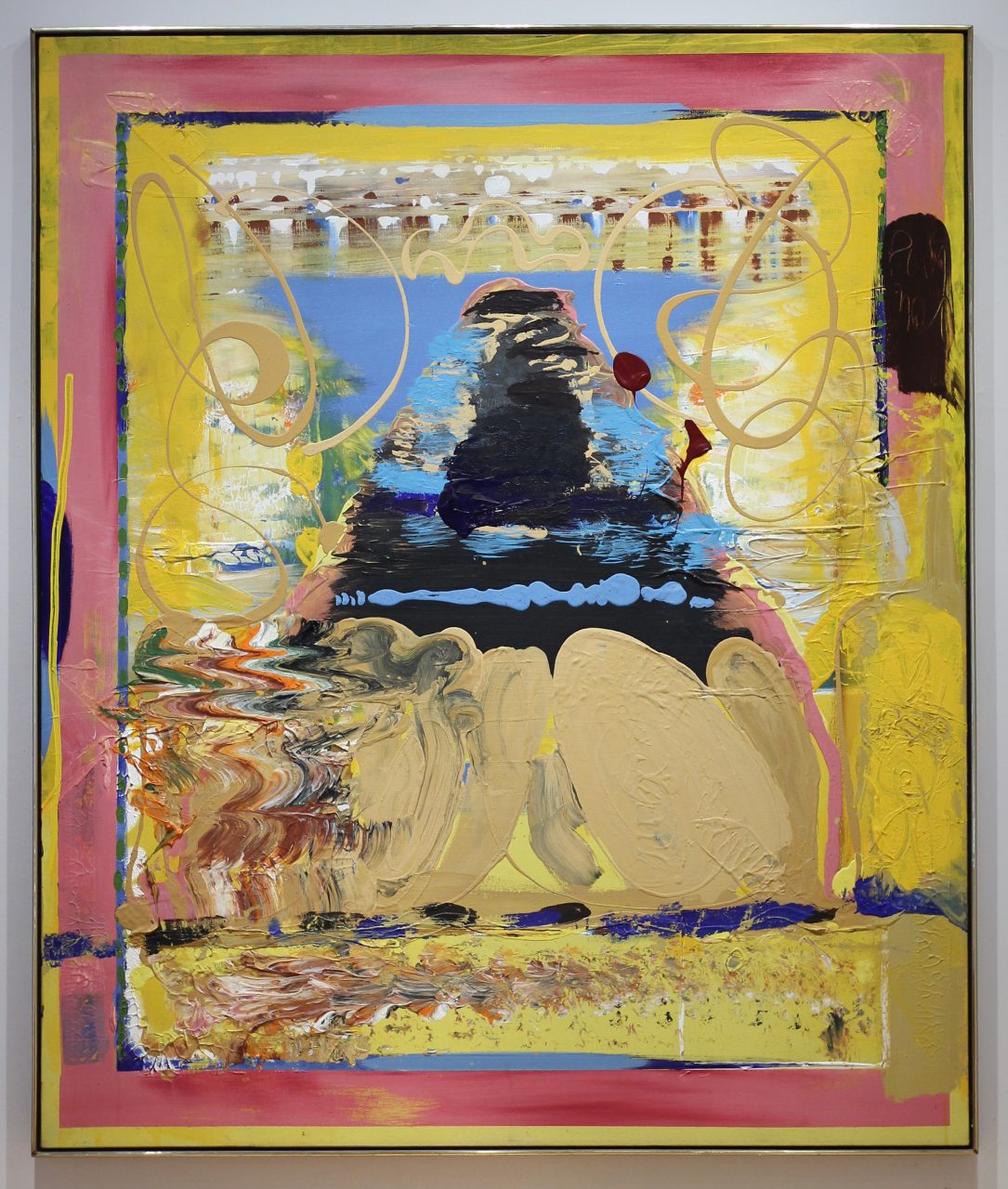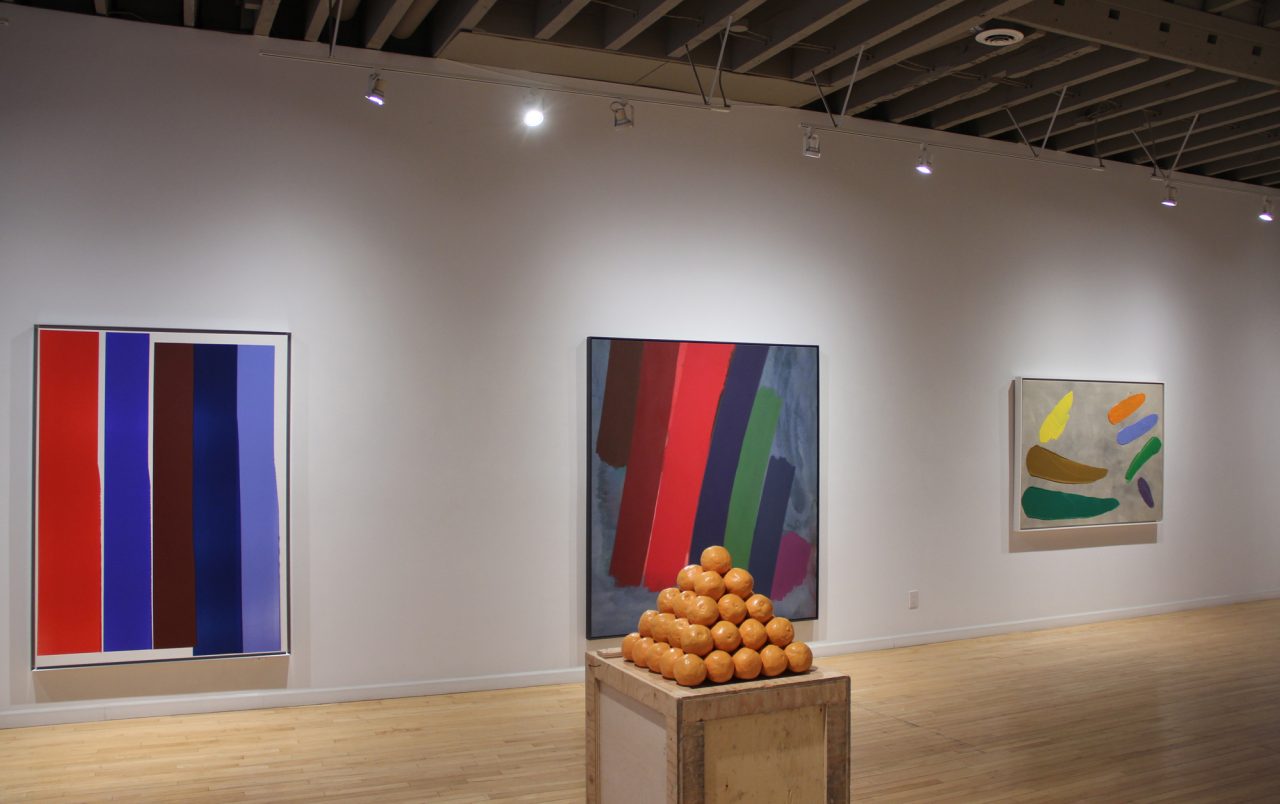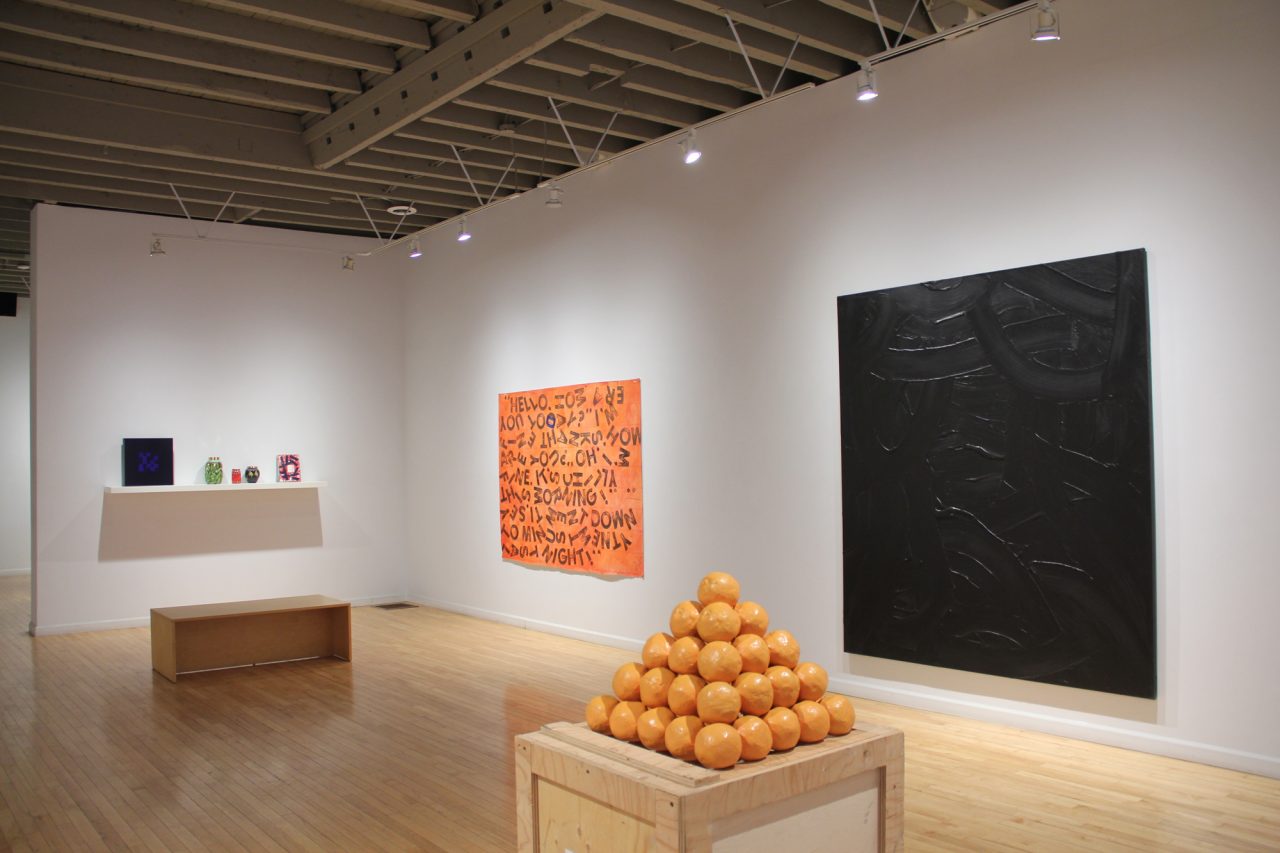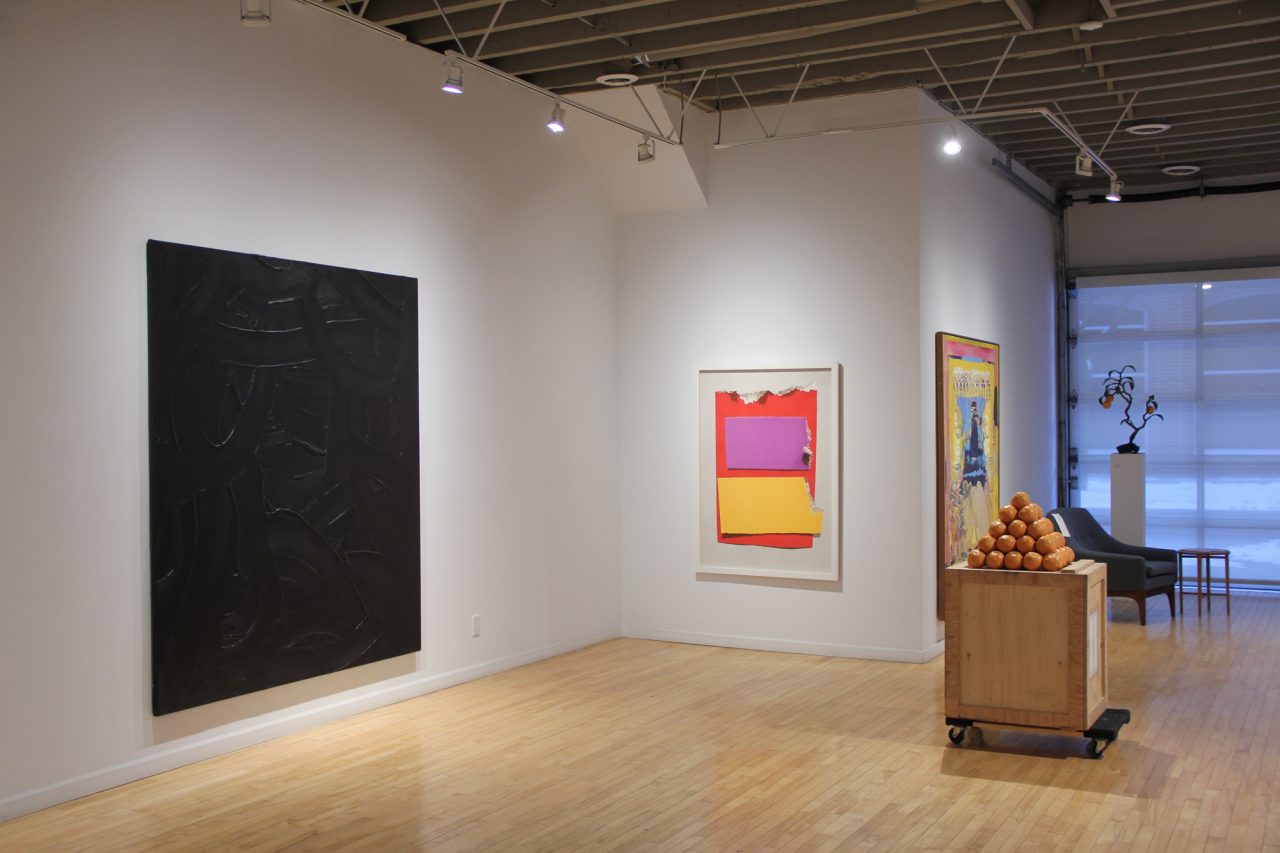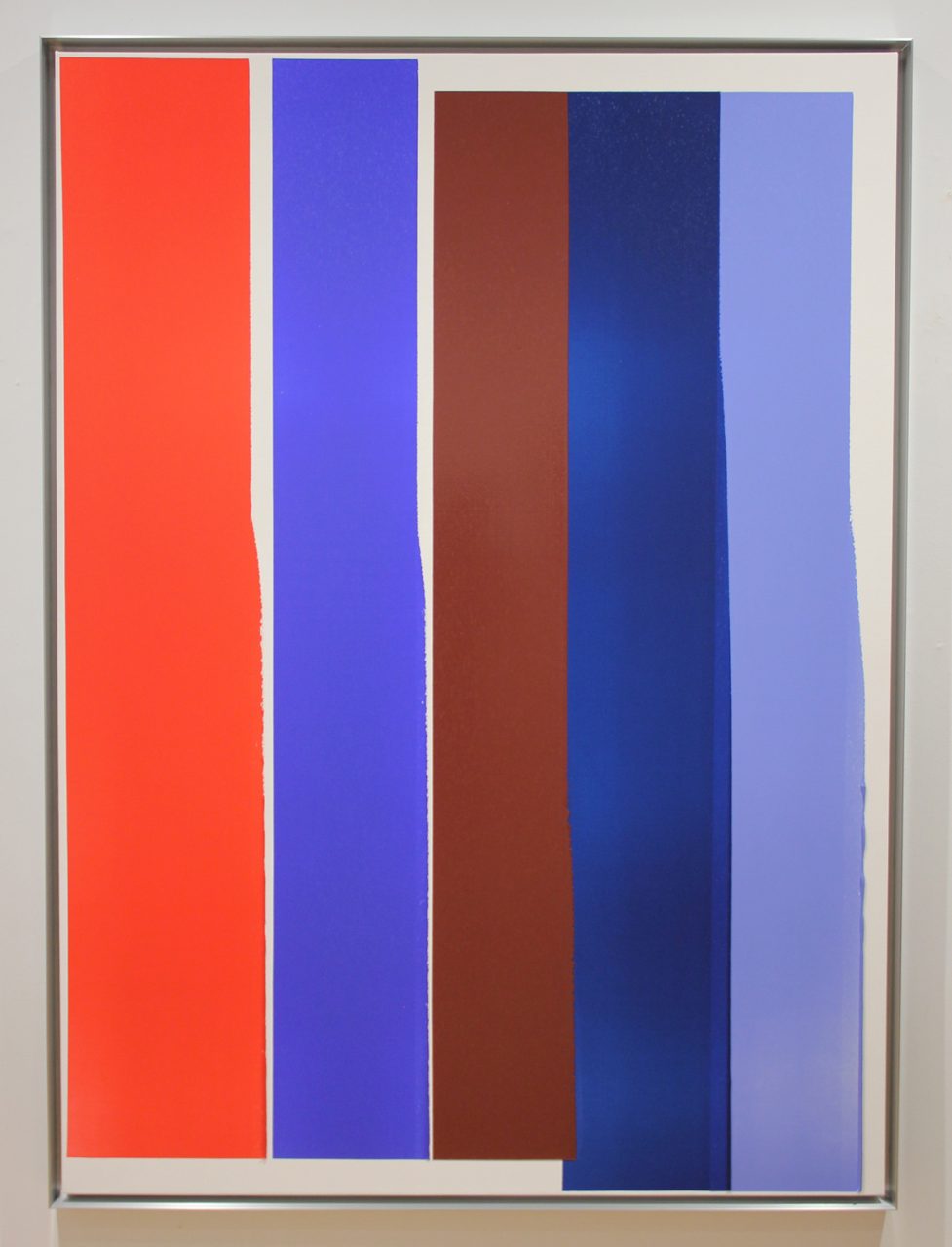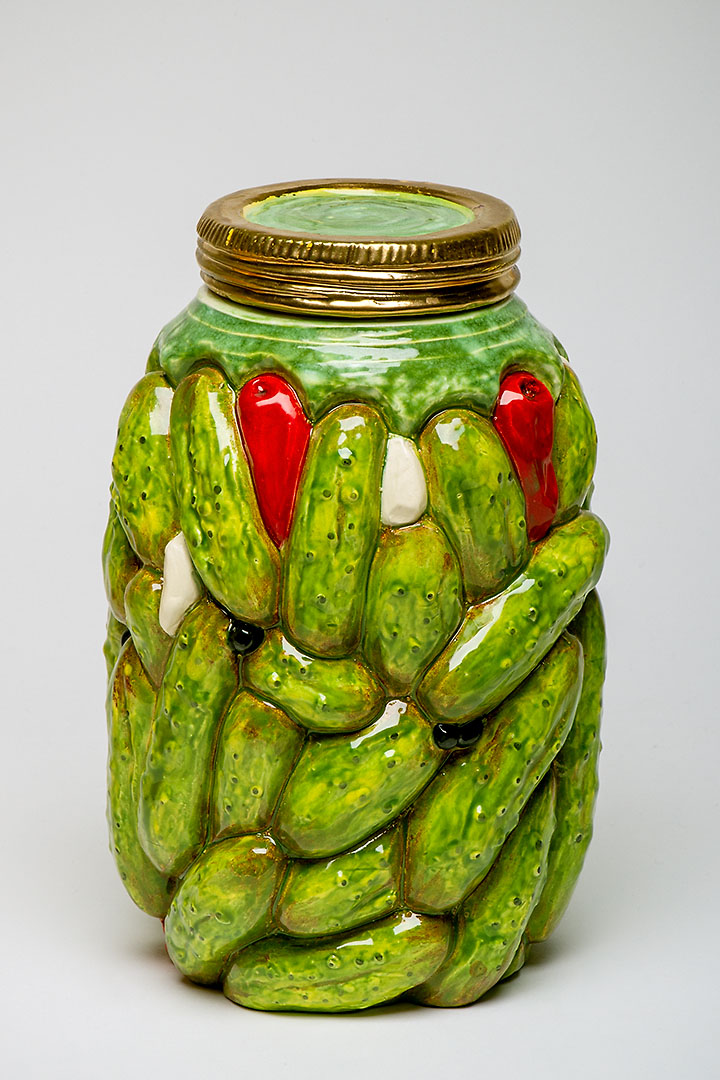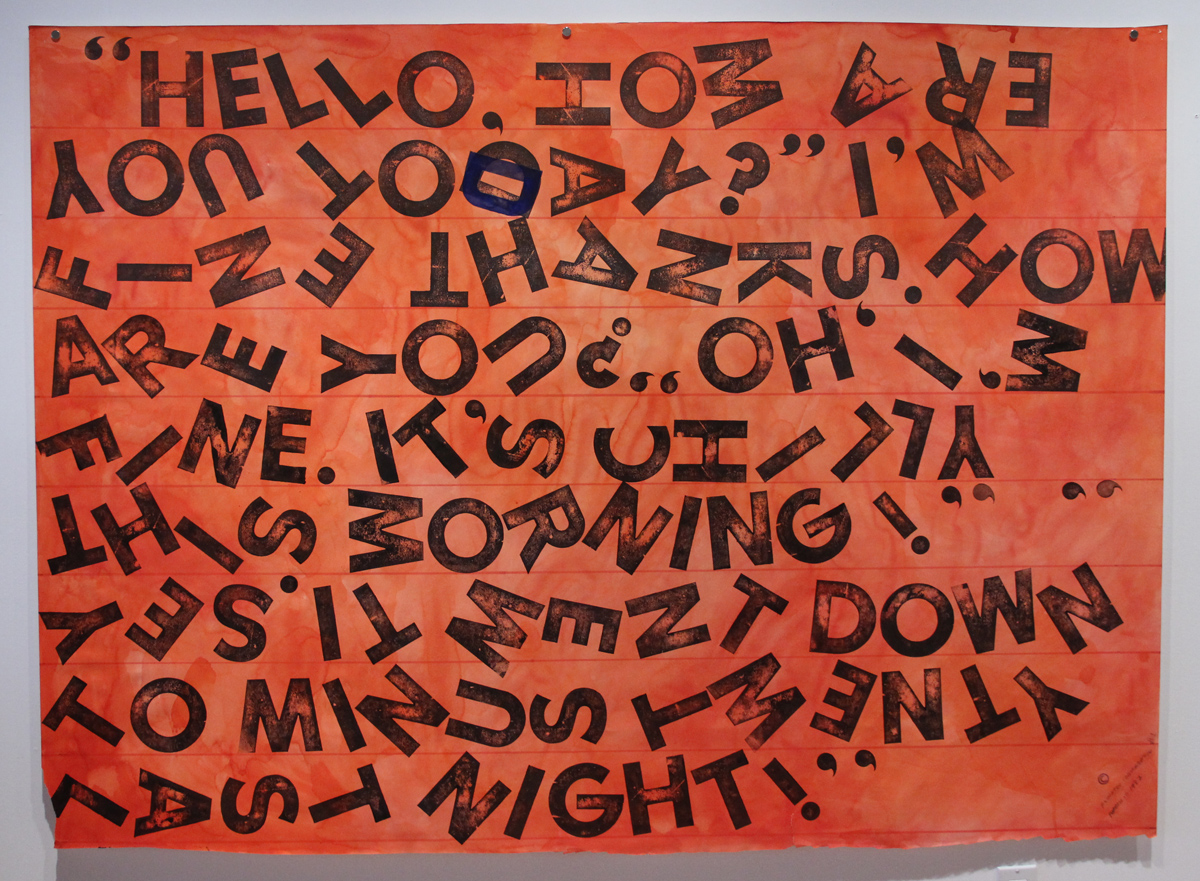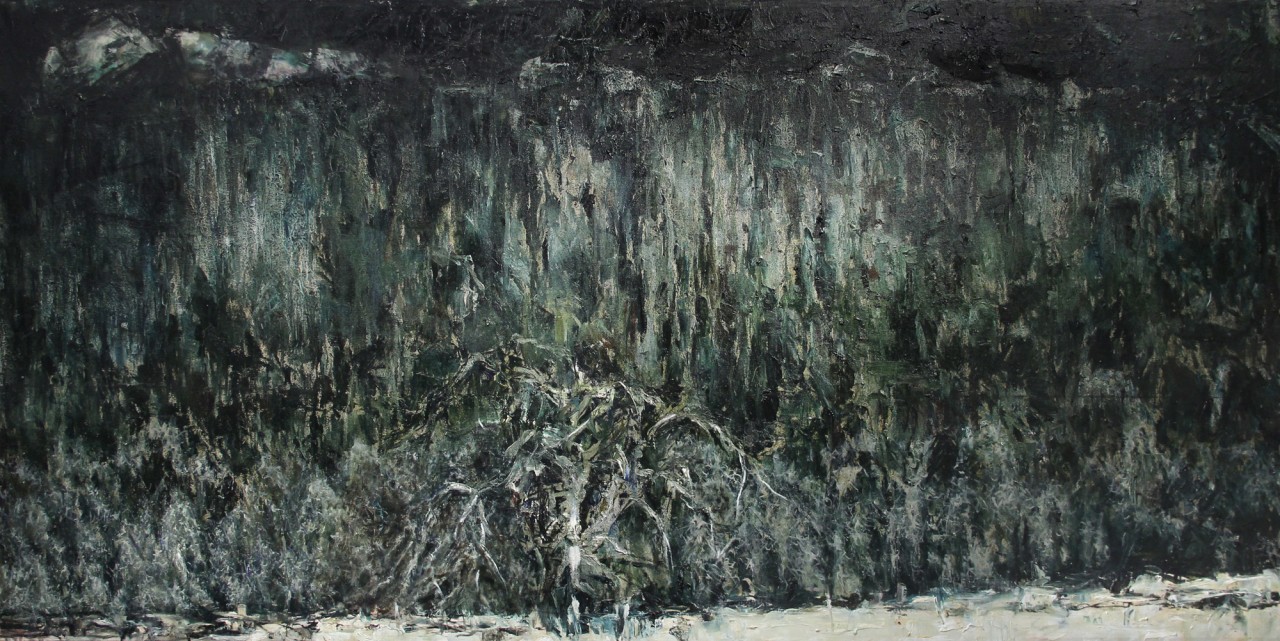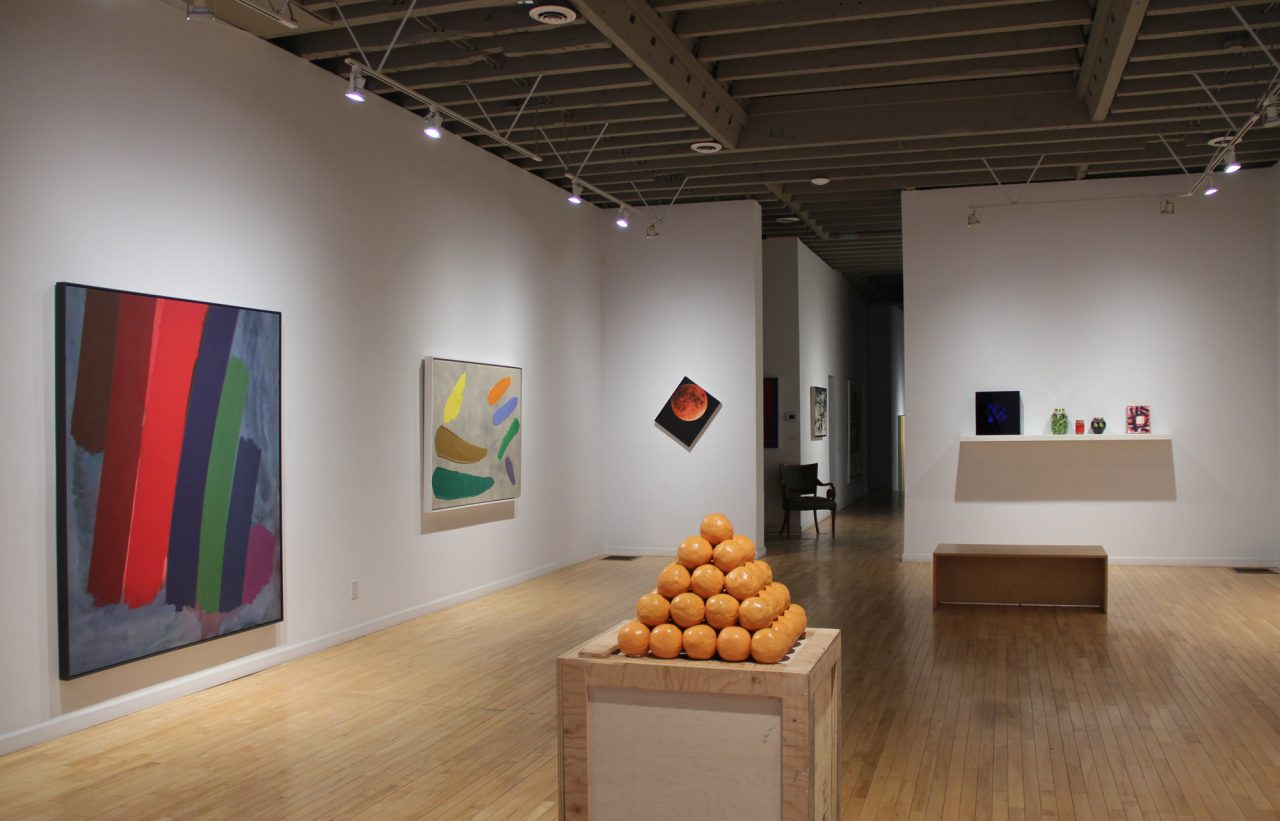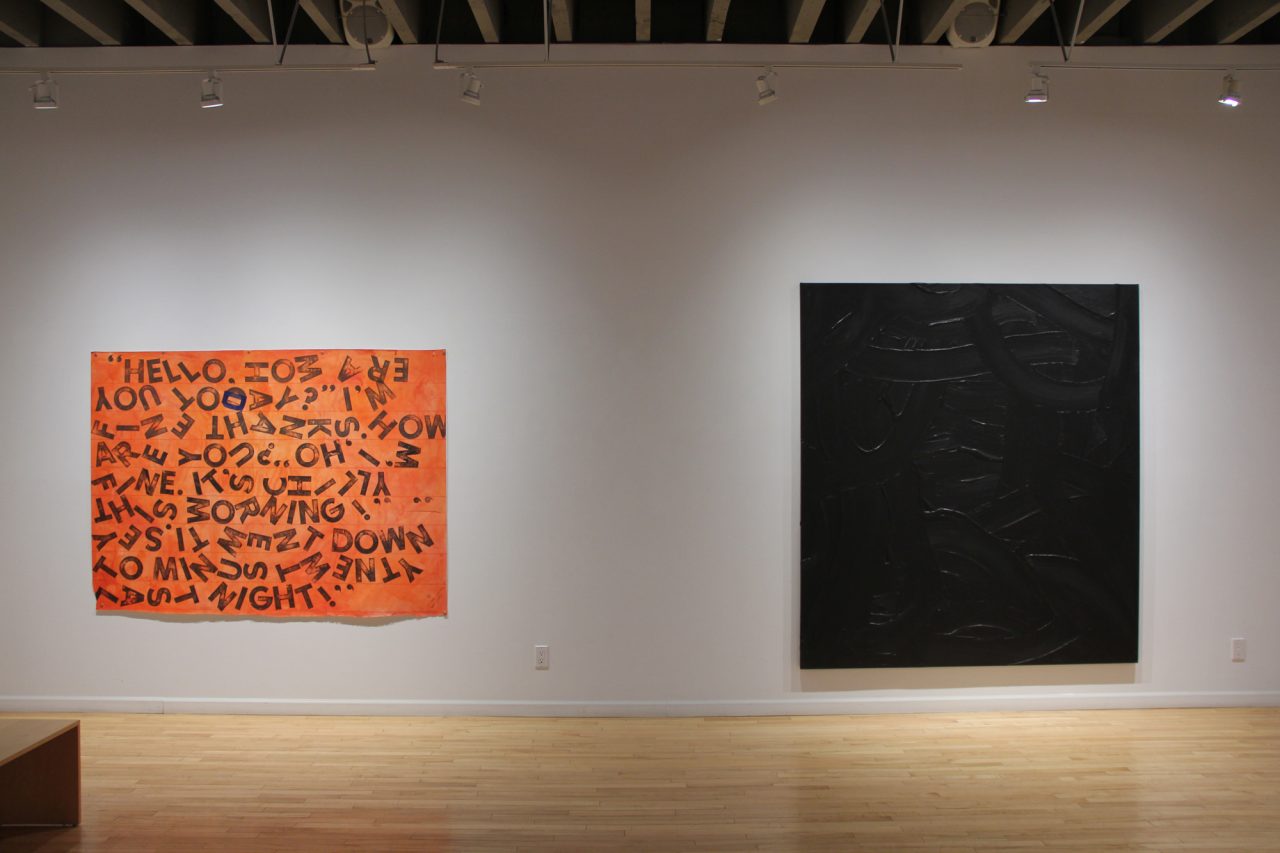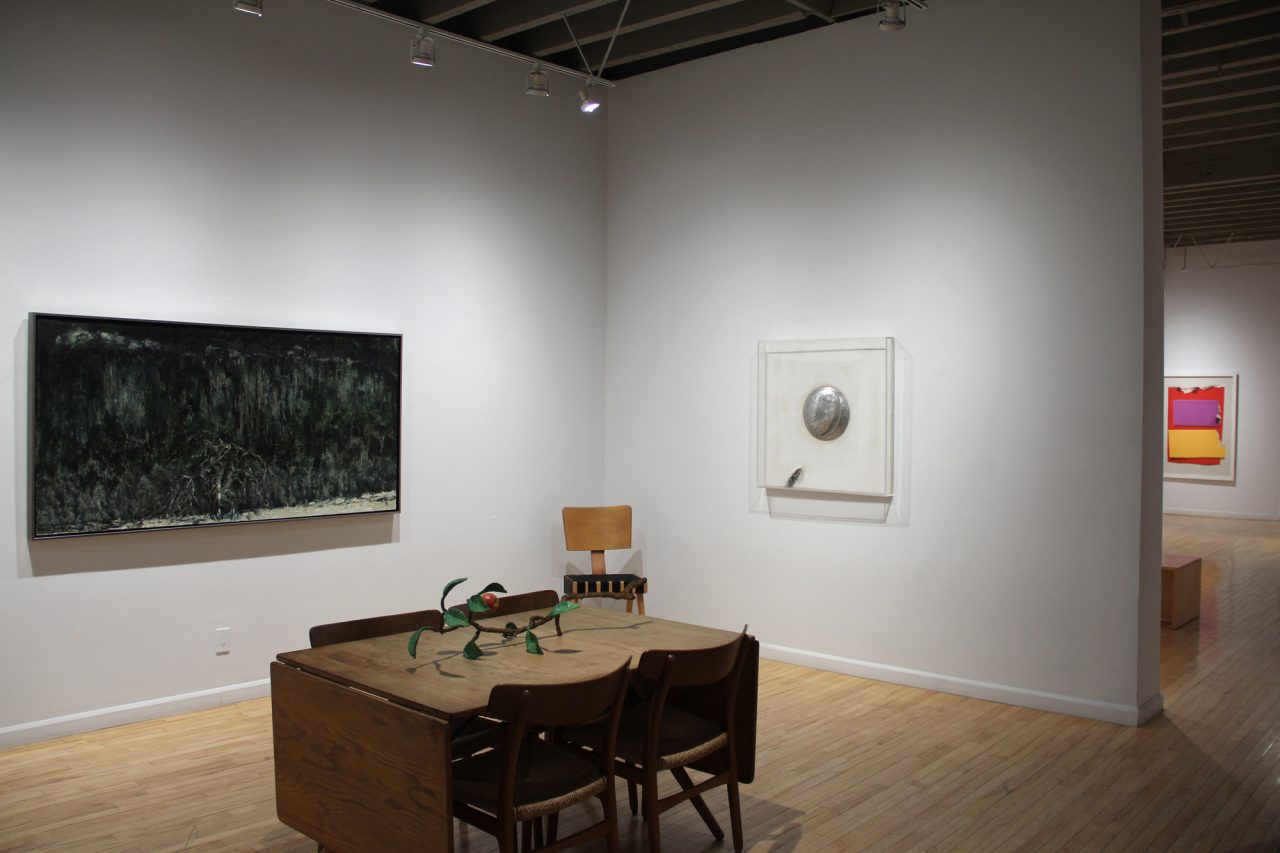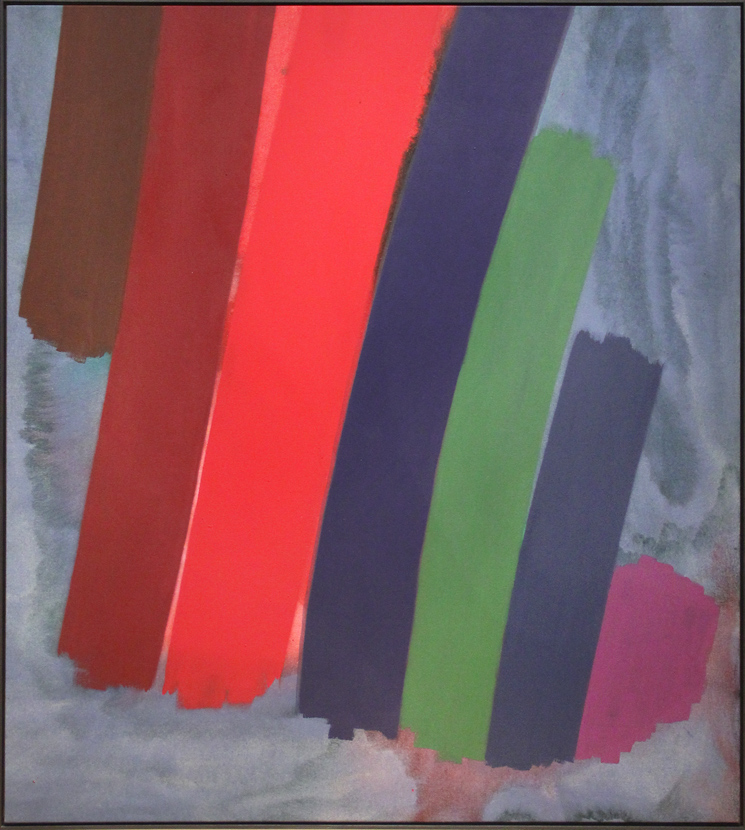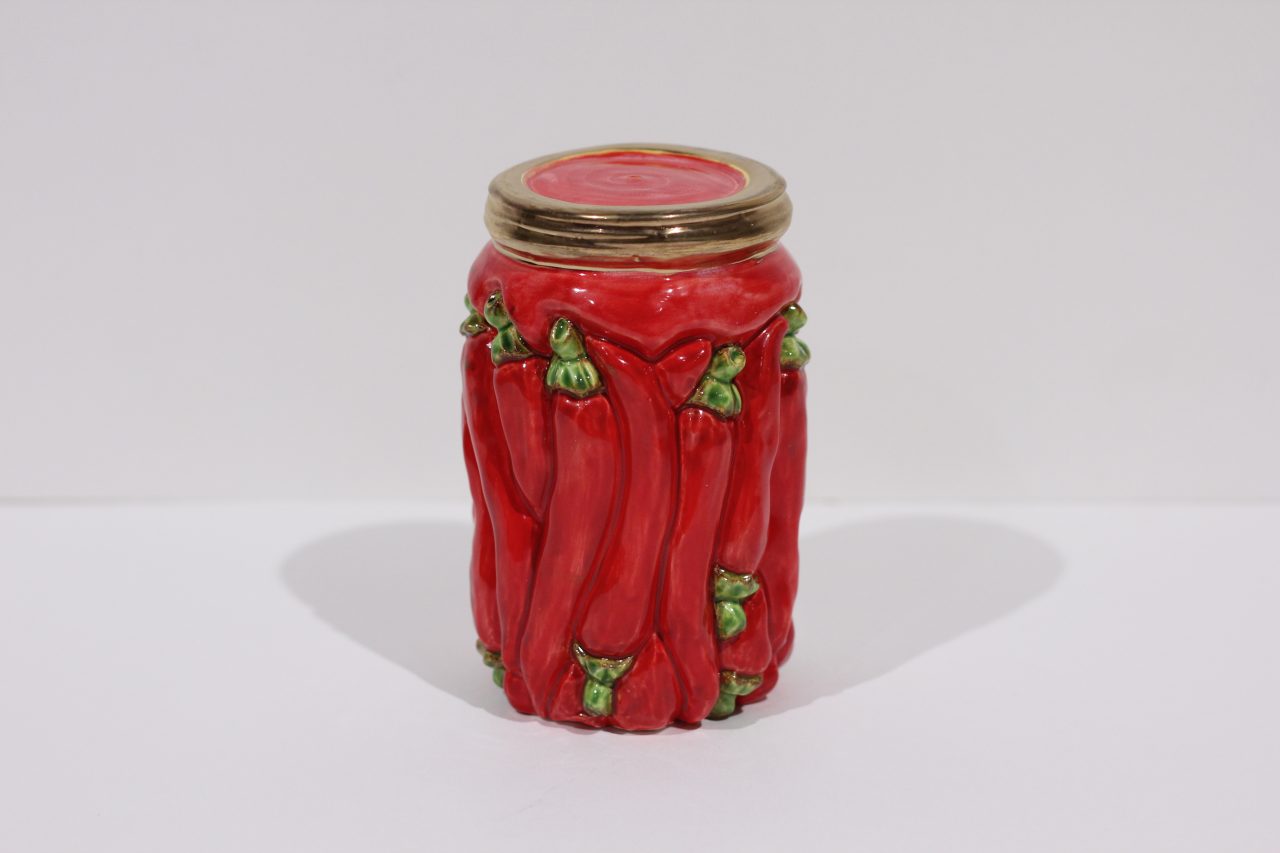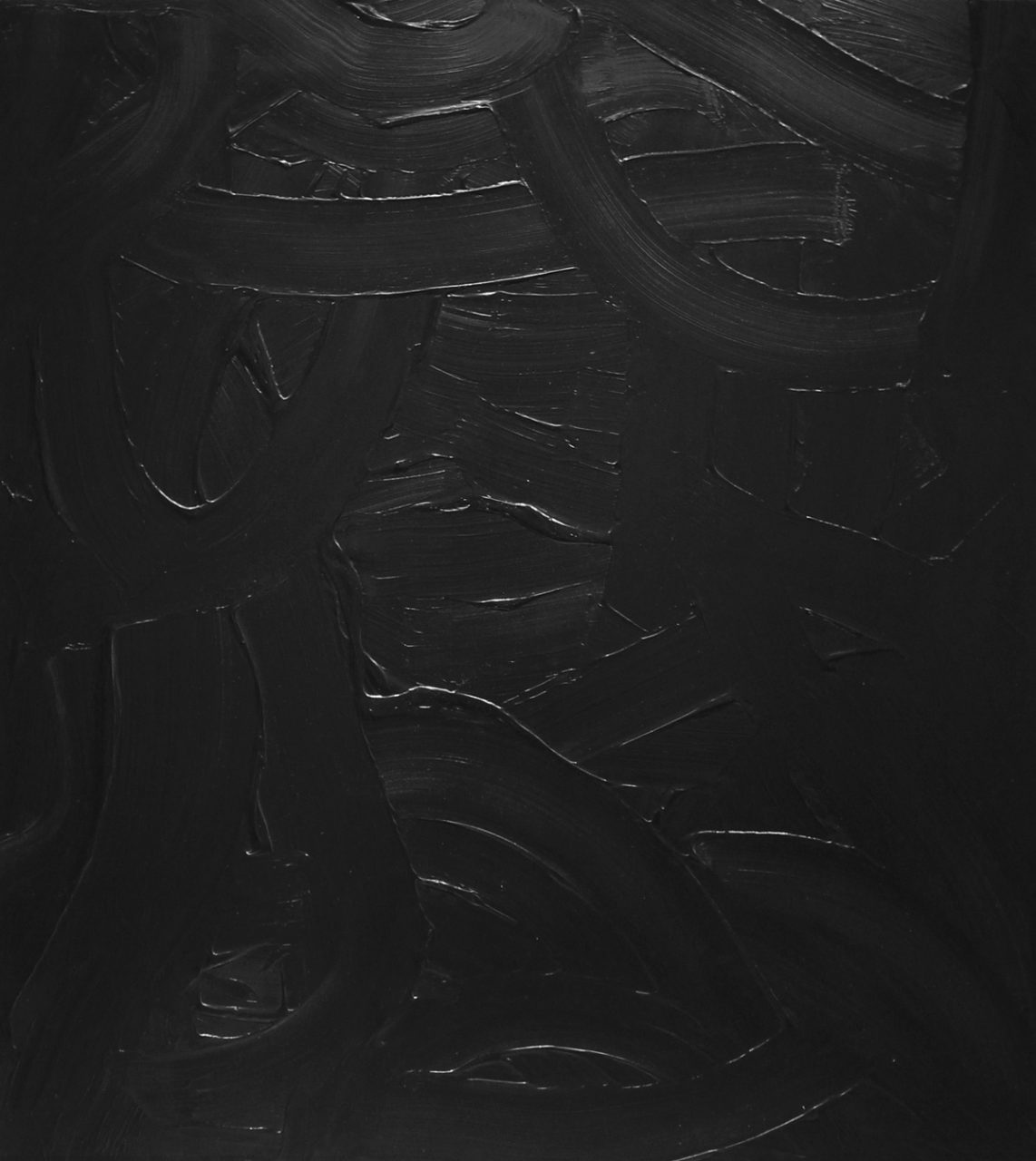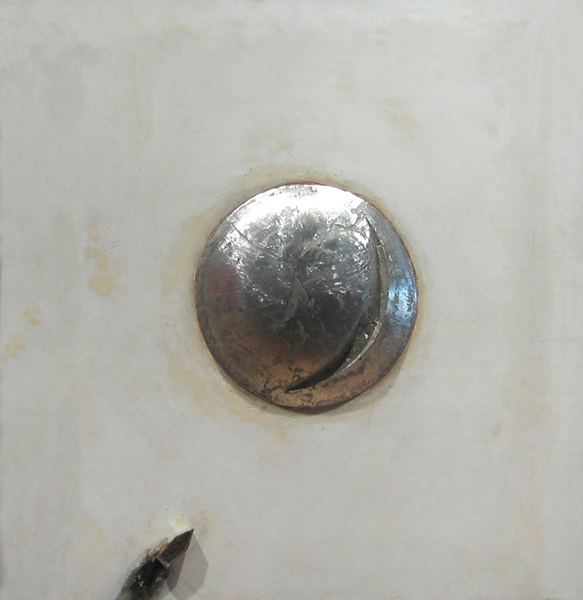“Chroma III”
“Chroma III” – January 30 – April 10, 2021
For the past two years we have curated exhibitions deep in the winter months that feature colour. This year, colour has been deeply needed. In response to the white falling snow outside, we have curated an exhibition that celebrates, compares and contrasts the quality of a colour’s purity, intensity or saturation.
Artists included are Vic Cicansky, Greg Curnoe, Gathie Falk, Jonathan Forrest, Will Gorlitz, Gino Lorcini, Ron Martin, William Perehudoff, Gordon Rayner, David Urban and Hans Wendt.
Gathie Falk‘s “55 Oranges” bronze sculpture anchors the exhibition. The repetition of ordinary activities and motifs of domesticity is a common thread for Falk’s work. She is especially well known for her “piles”, carefully arranged pyramid displays of apples, oranges and grapefruits that she replicated from a childhood memory.
Falk’s “55 Oranges” is chromatically offset by Ron Martin‘s “Back to Painting” one-colour black painting. Painted in 1978, Martin was in the middle of his 10 year exploration of painting only black paintings. Constrained by the size of the canvas, the amount of paint and the amount of time allotted, Martin created an immersive experience that is just as much about light and shadow, paint and texture as it is about gesture.
Next to Ron Martin’s black painting is a 1987 lettered work by Greg Curnoe titled “Animated Conversations #1”. Painted in March 1987 when Curnoe was making a series of large lettered works for his infamous YYZ Gallery exhibition “I Tell Stories”, the text-based, bright orange watercolour records a common Canadian conversation focused, not surprisingly, on the weather. At the time Curnoe joked: “Are you going to be able to see my show at the YYZ or will I have to describe it to you? – since it’s all texts and poems I could send them to you – but since they are also paintings, I can’t.” Curnoe forces us to read the artwork to “paint” the picture in our head. He takes a simple moment and elevates it to a conceptual painting.
Colour is front of mind with Jonathan Forrest, William Perehudoff and Hans Wendt. All three artists are influenced by the history of abstract painting and modernism. Both Jonathan Forrest and William Perehudoff’s paintings follow certain abstract standards within the modernist tradition where no outside influences are referenced. Hans Wendt, on the other hand, pays homage to similar standards, though his complex composition cheekily turns a seemingly abstract work into a whimsical figuration.
Will Gorlitz, best known for his engaging landscape paintings, recently painted “Super Wolf Blood Moon”, a tilted black painted canvas with a fiery orange moon perfectly placed. Engaging us in a unique visual experience, the blood moon is both enchanting and dramatic.
On the shelf on the end wall, we have placed a collection of artworks saturated with colour. Gino Lorcini‘s blue plexiglass & aluminum sculpture absorbs light and reveals itself to you only upon closer inspection. Vic Cicansky‘s glorious ceramic glazed jars tempt us with their juicy colour and playful treatment of common household staples. David Urban‘s 10 x 8 in. abstract packs a lot of punch with the perfect placement of 3 colours, balanced and simply done.
Lastly, Gordon Rayner‘s “Queen” painting from 1977 combines bubble gum pink and bright yellow which makes a striking colour combination.
In direct contrast to the bright colour in the front gallery, we have hung a lush landscape painting by Roly Fenwick in the middle gallery along with 2 rare Ed Zelenak sculptures. Roly Fenwick’s large “Dark Presence, Black Escarpment” places the viewer on the road looking up at the sheer face of the escarpment on the other side. The wintery tree grounds us, as well as the deceptive hydro wire that cuts through the horizontal plane of the canvas. He transports us to another location while creating a sublime, yet raw, version of his familiar landscape. Ed Zelenak is best known for his sculptures that combine a subtle spirituality with a keen awareness of the natural world. The two sculptures hanging in the middle gallery are minimally delicate, refined sculptures that are also complex and physically rendered.
